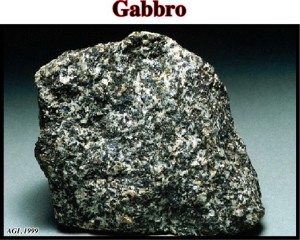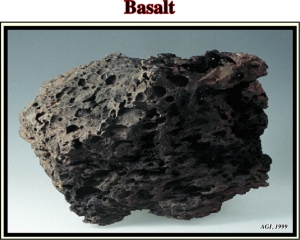One thing that has jumped out at me during my studies of geology has been the concept of polymorphs. Polymorphs are rocks made of the same mineral composition, but with different crystal structures. Two such polymorphs that are prevalent all over the globe are gabbro and basalt. The reason why they are so common is because they are formed directly from the magma or lava that is being cooled as it approaches earth’s surface. While they are both igneous rocks with practically the same composition, the main difference between these two rocks is the formation process, or the rate at which the liquid rock they start off as is cooled.
Gabbro is formed when liquid rock is cooled deep underground, very slowly, over an extended period of time. It’s an intrusive igneous rock, and it’s closer proximity to the earth’s very hot core is the reason why it takes longer to cool, and because of this the rock is visibly very different than its counterpart, basalt. The crystals are very large and obvious to the naked eye and the texture is very coarse-grained. This coarse-grained texture can be labeled phaneritic, which are very large crystals, or porphyritic, a mixture of large and finer grained crystals. The period of time which the liquid rock takes to cool will determine the texture.
Basalt, on the other hand, is an extrusive igneous rock. It is formed much closer to the earths surface, and because of this, that cooling process is much more rapid than that of gabbro. The much quicker rate of cooling gives basalt what is called an aphanitic texture, or one which is so fine grained they cannot be seen by the unaided human eye.

